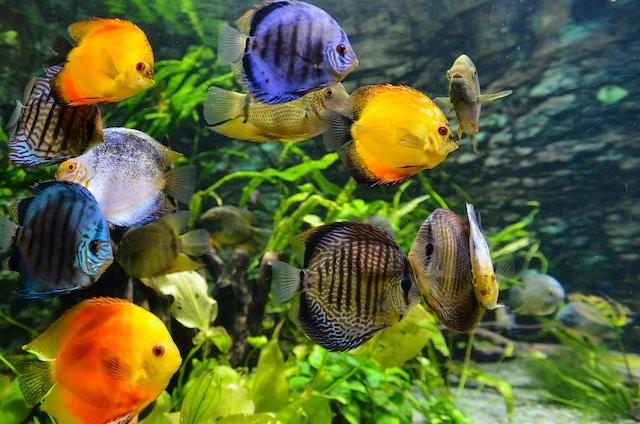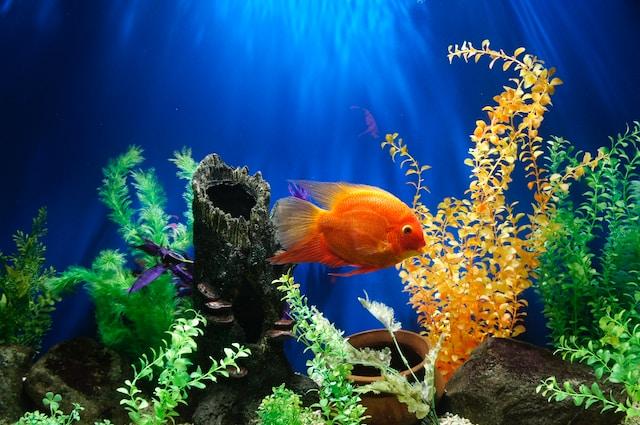Take care of fish in an aquarium involves several essential steps to maintain the health of the ecosystem within. Proper care minimizes the likelihood of issues, such as fish becoming ill.
So, what should be done to ensure the well-being of the fish in your home aquarium? Here are some recommended tips to be performed regularly.
1. Measure the Water pH Balance
Water is the primary living medium for fish, making it crucial to measure the water’s pH balance.
Before introducing fish or other living creatures into the aquarium, test the water parameters, including ammonia, nitrate, nitrite, and pH levels.
Test results, apart from pH, should read zero before using the water to fill or replace aquarium water. To maintain a balanced pH, the acidity level should be between 7.0 to 7.8. The acidity level depends on the species of fish being kept.
2. Aquarium Temperature
Ensure that the aquarium temperature is suitable for its inhabitants. Use a thermometer to determine the ideal temperature, preventing the water from becoming too cold or too hot.
Freshwater aquariums typically maintain an ideal temperature between 21 to 27 degrees Celsius.
3. Filtration
Filtration is the “heart” of every aquarium. With proper filtration, the ecosystem’s life within the aquarium can be controlled. Various filters are available at pet stores, including undergravel filters that use a pump to circulate air.
The water flow through the filter should be about four times the tank volume. For instance, a 20-gallon tank should have a filter flow of 80 gallons per hour.
4. Fish Quantity in the Aquarium
Overcrowding the aquarium with too many fish can lead to problems. It’s crucial to ensure not to add too many fish. Adjust the quantity based on the aquarium’s size. For freshwater fish, they need a surface area of 13 square centimeters per fish for a size of 2.5 centimeters.
As for saltwater fish, the ratio is 2.5 centimeters of fish per 8 liters of water. For outdoor ponds, every 25 centimeters of fish requires 500 liters of water.
5. Learn About the Species of Fish Kept
It’s essential to gather information about the species of fish being kept. Learn about their ideal diet, adult size, the specific type of fish, and other relevant details.
Additionally, plan the stocking levels based on the adult size of the fish, not the size at the time of purchase.
Also, find out if the fish are compatible with any existing fish in the aquarium. For example, large carnivorous fish may not be suitable for an aquarium with guppies, tetras, or other small fish. Understand the water quality in the fish’s natural habitat as well.

6. Preparing Supporting Equipment
If you have an extra budget, you can add equipment to support the life of fish in the aquarium. Equipment that you can prepare includes a filter or water clarifier, water heater, aerator as an air bubble generator, and a light.
By adding equipment that is appropriately used according to its function, it will make the fish more comfortable and able to survive longer.
7. Giving Fish Time to Adapt
Another way to care for ornamental fish is to give them time to adapt before introducing them to the aquarium.
The method is quite simple: after purchasing the fish, you can mix aquarium water with water in a plastic bag in a 50:50 ratio and let it sit for about 15 to 20 minutes.
Turn off the aquarium light to reduce stress on the fish. If you buy more than one fish, introduce them simultaneously to avoid them forming colonies and cornering the new fish.
8. Monitoring the Water Content in the Aquarium
When caring for ornamental fish in the aquarium, you need to pay attention to the water pH inside the aquarium. You can check it using a special tool called a pH meter. Fish can live and grow well in water with a pH between 6.8 and 7.5.
Fish do not like sudden temperature changes, so make sure your aquarium is at a normal temperature between 22-27 degrees Celsius.
9. Regularly Cleaning the Aquarium
The most fundamental thing for fish to live healthily and comfortably in the aquarium is to maintain its cleanliness. You need to clean the aquarium at least once a week. While cleaning the aquarium, also check the health of the fish visually.
If a fish shows signs of illness, isolate it to prevent it from spreading to other fish.
10. Feeding Regularly
Another way to care for fish is by regularly feeding your pet fish. Provide food according to the type you are keeping. If you’re confused, you can consult with the place where you bought the fish.
Generally, fish are fed once a day. However, it’s essential to pay attention to how much you feed them. Don’t overfeed the fish, or your pet fish may suffer from fatty liver disease and increased stress.
***
These are the basic tips for maintaining the health of fish in an aquarium. In addition to the above tips, it’s crucial to further educate yourself about the species of fish being kept and common diseases that may affect them.

